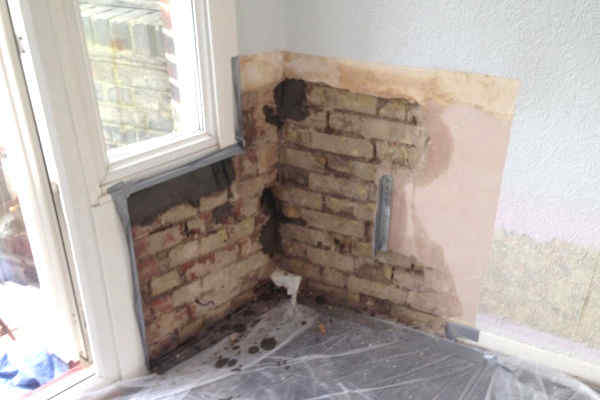Attention London Homeowners: How to Check for Damp & Mould
London and the south of England has its fair share of rain, add to that the fact that we never see the Sun these days and you have the ideal conditions for damp to attack buildings. As a homeowner, you should be vigilant when it comes to building maintenance and in this short article, we offer a few tips on how best to inspect your home for damp and mould.
- Interior walls & ceilings –A leaking roof will lead to water penetrating the interior structure and if left unaddressed, you will find damp patches and tide marks on walls and ceilings. Check every room and should you find signs of moisture, call London Damp Specialists and we will send a surveyor to inspect the property.
- Exterior walls – Close to ground level, there should be a damp proof course (DPC) between brick courses and if this is damaged, damp can penetrate up the walls. This is a gradual process and early intervention minimises damage; if you don’t spot this, further damage will be the result. Moss growth is a bad sign; take a screwdriver and poke the mortar, if it crumbles, you have a damp issues.
- Be proactive – You can make sure the home is well-ventilated, this reduces moisture in the air and even in the winter, it is wise to open a few windows for at least 30 minutes. Sill, damp air is the ideal environment for mould and mildew, which can cause serious respiratory conditions.
- Loft inspection – Armed with a flashlight, take a good look in the loft and inspect roof timbers for woodworm, dry and wet rot. Is the roof inner lining dry? Is there a musky smell? If you see signs of woodworm, you need to take timely action, as it spreads quickly, consuming wood as it moves.
- Condensation – Unfortunately, the weather conditions in the UK make for an ideal environment for damp and mould; condensation can damage timber window frames and if it reaches the walls, you have serious issues, with wet wall repair. Many people leave a dry cloth on every window sill to absorb the water, which is fine, but it does not address the underlying cause.
- Roof inspection – The roof is a critical component that protects the structure from nature’s harsh elements and should it be compromised, water can enter the inner roof structure, damaging joist and rafters. Gale force winds can lift roof shingles and if undetected, this can be a serious problem. Inspect the guttering and remove any debris, a blockage means excess rainwater will seep down the outside walls and this should be avoided at all costs.
We are proud to offer a homebuyer damp survey for those who are planning to buy property in London; you need to find out if the building is free from damp and a survey is the only way to know for sure. Paint can conceal timber damage and a seller won’t want that noticed!
If you would like a professional damp inspection, call London Damp Specialists on 020 7458 4864 and arrange for a survey.

